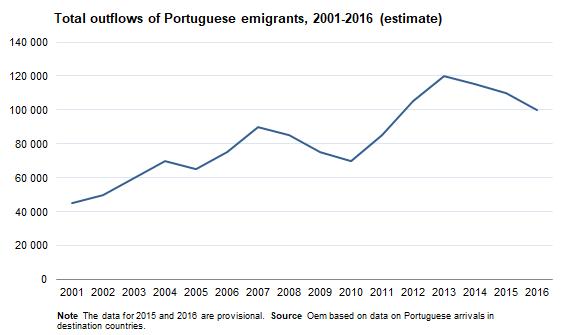If, overall, the downward trajectory is explained by the economic recovery in Portugal and its impacts on the labor market, being strongly correlated with the evolution of employment and unemployment, the acceleration observed in 2016 is due to changes in two of the most important destinations of Portuguese emigration: the United Kingdom and Angola. In the first case as a result of Brexit and in the second to the crisis caused by the fall in oil prices. The number of exits remains, however, at levels which, in recent history, are only parallel to those observed in the 1960s and 1970s. The creation or updating in recent years of migratory networks linking Portugal to several countries of destination, as a result of high emigration, makes it unlikely in the short term to resume the lower levels of emigration before the crisis.

Cite as Pires, Rui Pena (2017), “Tendência na emigração é de descida desde 2013”, Observatório da Emigração. http://observatorioemigracao.pt/np4EN/5940.html






